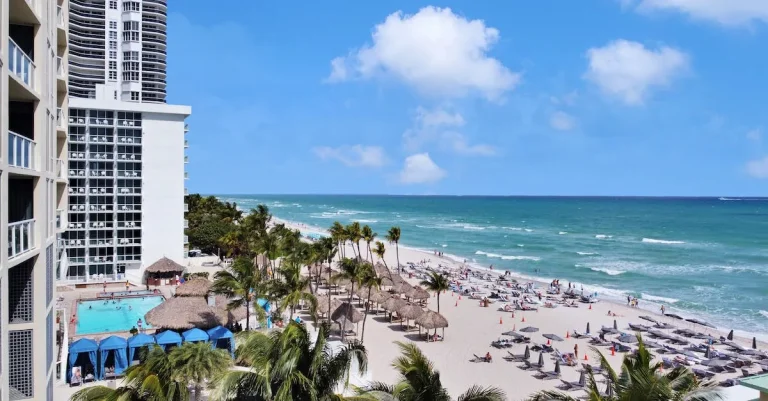Austin Vs San Francisco: Which City Is Better For You?
Deciding between moving to Austin or San Francisco can be a tough choice. Both cities have a lot to offer in terms of job opportunities, culture, cost of living and more.
If you’re short on time, here’s a quick answer to your question: Austin tends to be more affordable with fewer crowds while San Francisco offers higher salaries but a much higher cost of living. For outdoor activities and a laidback lifestyle, Austin may be a better fit. For high-paying tech jobs and an urban scene, San Francisco has the advantage.
In this comprehensive guide, we will compare Austin and San Francisco across categories like job market and economy, housing, cost of living, transportation, weather and climate, culture and diversity, education and health, safety, outdoor activities and overall quality of life. We aim to provide an in-depth look at the pros and cons of each city to help you determine which is the better fit for your needs and preferences.
Job Market and Economy
Overview of job opportunities
Both Austin and San Francisco offer great job opportunities overall. Austin has seen rapid job growth in recent years, especially in tech. Major companies like Google, Facebook, and Apple have expanded in Austin.
The city’s key strengths are in technology, business services, healthcare, and government/education. San Francisco is a global hub for tech jobs. Top companies like Salesforce, Airbnb, Uber, and Slack are based there.
Its major industries are tech, professional services, healthcare, tourism, and finance.
Key industries and employers
In Austin, major employers include Dell, IBM, Amazon, Tesla, Oracle, and Whole Foods. Key industries are technology, computer hardware/software, semiconductor manufacturing, clean energy, life sciences, and corporate headquarters.
In San Francisco, major employers are Salesforce, Wells Fargo, Uber, Gap Inc., and Airbnb. Top industries are technology, tourism, finance/insurance, health services, and professional services.
Unemployment rates
In December 2022, the unemployment rate was 3.2% in Austin metro area compared to 2.2% in San Francisco metro area. So the San Francisco job market is slightly tighter currently.Austin unemployment is still very low by historical standards while San Francisco unemployment is near record lows.
Economic outlook
Both cities have strong economic outlooks. Austin’s job growth is projected at 33.5% over the next decade. San Francisco’s projected job growth is lower at 15.5% but the large city’s economy is already mature. Austin likely offers more economic upside given its rapid recent expansion.
But both provide diverse job opportunities in growing fields like technology, healthcare, and professional services.
Housing
Home prices
Austin and San Francisco have significant differences in terms of home prices. While San Francisco is notorious for its sky-high real estate prices, Austin offers a more affordable housing market. According to recent data from Zillow, the median home price in San Francisco is around $1.4 million, whereas in Austin, it is about $400,000.
This stark contrast in prices allows individuals and families in Austin to have a better chance of owning their own home without breaking the bank.
Rent prices
When it comes to renting, San Francisco is known for having some of the highest rent prices in the United States. In contrast, Austin offers more reasonable rental rates. According to Apartment List, the average monthly rent for a one-bedroom apartment in San Francisco is approximately $3,500, whereas in Austin, it is around $1,300.
This significant difference in rent prices can have a substantial impact on an individual’s overall cost of living.
Availability
Another aspect to consider is the availability of housing options. San Francisco is a densely populated city with limited space for expansion, which contributes to the scarcity of available housing units.
On the other hand, Austin has more room for growth and development, resulting in a greater availability of housing options. This means that individuals looking for a place to live in Austin have a wider range of choices and a better chance of finding a suitable home.
Cost of Living
Groceries
When comparing the cost of groceries between Austin and San Francisco, it is important to consider the prices of essential items such as fruits, vegetables, meat, and dairy products. According to a study conducted by the Bureau of Labor Statistics, the average cost of groceries in Austin is lower than in San Francisco.
This means that residents of Austin can enjoy lower prices and potentially save more money on their monthly grocery bills. Additionally, Austin is known for its vibrant farmers markets and local produce, which can further contribute to affordable grocery options.
Utilities
Utilities, including electricity, water, and internet, are essential expenses that can greatly impact the cost of living. In Austin, the cost of utilities tends to be lower compared to San Francisco. According to a study by Numbeo, the average monthly utility bill in Austin is around $150, while in San Francisco, it can be as high as $200 or more.
This can be attributed to various factors such as the difference in energy sources, population density, and climate. Therefore, if you are looking for a city with lower utility costs, Austin may be the better option for you.
Transportation
Transportation costs play a significant role in determining the overall cost of living in a city. In terms of public transportation, San Francisco has a well-developed system with buses, trams, and trains, making it convenient for residents to commute. However, it comes with a higher price tag.
On the other hand, Austin has been expanding its public transportation options, including buses and a light rail system. Additionally, the cost of owning a car and gasoline tends to be lower in Austin compared to San Francisco.
Therefore, if you prefer a city with more affordable transportation options, Austin may be the better choice.
Healthcare
Healthcare costs can vary significantly depending on factors such as insurance coverage, medical facilities, and the overall healthcare system in a city. San Francisco is known for its high-quality healthcare services, but it comes with a higher price tag.
According to a report by the Kaiser Family Foundation, the average annual healthcare spending per capita in San Francisco is higher than in Austin. However, it is important to note that Austin has a growing healthcare industry with reputable hospitals and medical facilities.
Moreover, Texas has a reputation for its lower healthcare costs compared to other states. Therefore, if you are looking for a city with more affordable healthcare options, Austin may be the better choice for you.
Transportation
Public transportation
When it comes to public transportation, both Austin and San Francisco offer viable options for getting around the city. San Francisco is known for its iconic cable cars, buses, and the Bay Area Rapid Transit (BART) system, which connects the city with the surrounding areas.
The BART system is especially convenient for commuters traveling between San Francisco and the East Bay.
Austin, on the other hand, has an extensive bus network operated by Capital Metro, with several convenient routes that serve different parts of the city. Additionally, Austin recently introduced a new light rail system, MetroRail, which provides a convenient option for those traveling between downtown and the suburbs.
Both cities also have options for bike-sharing and ride-sharing services, making it easy to get around without a car.
Traffic and commute times
Traffic is a significant consideration for anyone living in a city, and both Austin and San Francisco have their own challenges in this regard. San Francisco is notorious for its heavy traffic congestion, especially during peak commute hours.
The city’s hilly terrain and limited road infrastructure contribute to the congestion.
Austin, on the other hand, has seen a significant increase in traffic in recent years due to its rapid population growth. However, compared to San Francisco, Austin’s traffic is generally more manageable.
The city has invested in improving its road infrastructure to accommodate the increasing number of vehicles on the road.
When it comes to commute times, San Francisco tends to have longer average commute times, with many residents spending a significant amount of time stuck in traffic. Austin, while experiencing growth-related traffic, generally has shorter commute times, thanks to its less congested road network.
Airport access
Both Austin and San Francisco have international airports that provide easy access to other cities and countries. San Francisco International Airport (SFO) is one of the busiest airports in the United States and offers a wide range of domestic and international flights.
Austin-Bergstrom International Airport (AUS), although smaller in size, is known for its efficient operations and convenient layout. It offers numerous non-stop flights to major cities across the United States and several international destinations.
Weather and Climate
When it comes to comparing Austin and San Francisco, one of the most significant factors to consider is the weather and climate. Both cities offer unique climates that may appeal to different individuals based on their preferences.
Seasonal temperatures
Austin, known for its warm and sunny climate, experiences hot summers with temperatures reaching up to the mid to high 90s°F (32-38°C). Winters in Austin are mild, with temperatures averaging in the mid-60s°F (15-20°C).
On the other hand, San Francisco has a cooler and more moderate climate throughout the year. Summers in San Francisco are characterized by cool temperatures ranging from the mid-60s°F to low 70s°F (18-23°C). Winters in San Francisco are mild, with temperatures averaging in the mid-50s°F (10-15°C).
Precipitation
When it comes to rainfall, there is a notable difference between Austin and San Francisco. Austin receives an average of 33 inches (83.8 cm) of rain per year, with the majority of rainfall occurring during the spring and fall months.
In contrast, San Francisco receives around 23 inches (58.4 cm) of rain per year, with most of the precipitation occurring during the winter months. The difference in rainfall patterns may be a factor to consider for those who prefer a drier or wetter climate.
Natural disasters
Both Austin and San Francisco are susceptible to certain natural disasters, albeit of different types. Austin is located in an area prone to severe thunderstorms, occasionally leading to flash floods. It is also within the “Tornado Alley,” although tornadoes are relatively rare in the city.
San Francisco, on the other hand, is located in an earthquake-prone region due to its proximity to the San Andreas Fault. While earthquakes can occur, the city has strict building codes and emergency preparedness measures in place to mitigate the risks.
For more detailed information on weather and climate in Austin, you can visit the official website of the National Weather Service – Austin/San Antonio. To learn more about San Francisco’s weather, you can visit the official website of the National Weather Service – San Francisco Bay Area/Monterey.
Culture and Diversity
When it comes to culture and diversity, both Austin and San Francisco have a lot to offer. These cities are known for their vibrant and unique cultural scenes that attract artists, musicians, and creative individuals from all over the world.
Arts and music scene
Austin, often referred to as the “Live Music Capital of the World,” has a thriving music scene that is deeply ingrained in its culture. From small intimate venues to large outdoor festivals, there is always live music playing somewhere in the city.
The annual South by Southwest (SXSW) festival brings together musicians, filmmakers, and tech innovators for a week-long celebration of creativity.
San Francisco, on the other hand, has a rich history of artistic expression and is home to many renowned art galleries, theaters, and museums. The city’s vibrant arts scene is reflected in its diverse range of cultural events and festivals, such as the San Francisco International Film Festival and the Folsom Street Fair.
Both cities offer a plethora of opportunities for artists to showcase their work and for music lovers to discover new talents. Whether you’re into indie rock, jazz, classical music, or experimental art, you’ll find something to suit your taste in both Austin and San Francisco.
Diversity statistics
When it comes to diversity, San Francisco is known for its multicultural population and acceptance of different cultures, ethnicities, and lifestyles. According to the U.S. Census Bureau, San Francisco has one of the highest percentages of foreign-born residents among major U.S. cities.
The city’s vibrant neighborhoods, such as Chinatown, the Mission District, and the Castro, showcase its diversity and contribute to its unique cultural fabric.
Austin, although not as diverse as San Francisco, has been experiencing rapid growth in recent years and has seen an increase in its diverse population. The city has been recognized as one of the fastest-growing cities in the United States, attracting people from various backgrounds and cultures.
Notable attractions and events
Both Austin and San Francisco offer a wide range of notable attractions and events that showcase their unique cultural heritage.
In Austin, visitors can explore the vibrant street art scene in the East Austin neighborhood, take a dip in the natural springs at Barton Springs Pool, or visit the iconic Texas State Capitol. The city also hosts the Austin City Limits Music Festival, which attracts top musicians from around the world.
San Francisco boasts famous landmarks such as the Golden Gate Bridge, Alcatraz Island, and Fisherman’s Wharf. The city’s annual Pride Parade, held in June, is one of the largest LGBTQ+ celebrations in the world.
Additionally, the San Francisco Museum of Modern Art (SFMOMA) showcases a remarkable collection of contemporary art.
Both cities offer a plethora of cultural experiences, from museums and galleries to festivals and events. Whether you prefer the laid-back vibe of Austin or the urban charm of San Francisco, you’re sure to find a city that caters to your cultural interests and celebrates diversity.
Education
Public schools
Both Austin and San Francisco offer a range of options when it comes to public schools. Austin is known for its excellent public school system, with highly-rated schools and a commitment to providing quality education to its students.
The Austin Independent School District (AISD) is the largest school district in Central Texas and has consistently been recognized for its academic achievement. Parents in Austin have a variety of public school options to choose from, ensuring that they can find the right fit for their children.
San Francisco also has a strong public school system, with many highly-rated schools and a focus on providing a well-rounded education. The San Francisco Unified School District (SFUSD) is committed to supporting the academic and personal development of every student.
The district offers a wide range of programs and resources, including language immersion programs and specialized schools for students with different learning needs.
When comparing the public schools in Austin and San Francisco, it’s important to consider factors such as class sizes, extracurricular activities, and the overall quality of education. Both cities have their strengths and weaknesses in these areas, so it’s important for parents to research and visit schools to determine which option is best for their children.
Higher education options
Both Austin and San Francisco are known for their vibrant higher education scenes, with a range of prestigious universities and colleges.
Austin is home to the University of Texas at Austin, one of the largest and most respected public universities in the country. The university offers a wide range of programs and degrees, attracting students from all over the world.
In addition to UT Austin, the city also has other notable institutions such as St. Edward’s University and Huston-Tillotson University, providing a diverse range of educational opportunities.
San Francisco is renowned for its innovative and highly-regarded universities. The city is home to institutions such as the University of San Francisco, San Francisco State University, and the California College of the Arts.
These universities offer a range of programs and degrees, with a focus on cutting-edge research and experiential learning.
When considering higher education options in Austin and San Francisco, students should consider factors such as program offerings, campus culture, and career opportunities. Both cities offer a wealth of educational resources and opportunities for personal and academic growth.
For more information on public schools and higher education options in Austin and San Francisco, you can visit the websites of the respective school districts and universities:
- Austin Independent School District
- San Francisco Unified School District
- University of Texas at Austin
- University of San Francisco
Health and Safety
Access to healthcare
When it comes to access to healthcare, both Austin and San Francisco offer a range of options for their residents. In Austin, there are numerous hospitals, clinics, and healthcare centers that provide quality care to its residents.
Some of the top healthcare facilities in Austin include St. David’s Medical Center and Seton Medical Center. Additionally, the city is also home to a number of specialized healthcare providers, such as the Dell Children’s Medical Center, which focuses on pediatric care.
Similarly, San Francisco boasts a well-developed healthcare system with a variety of hospitals and clinics. Some of the top medical facilities in the city include UCSF Medical Center and California Pacific Medical Center.
San Francisco is also known for its strong focus on holistic and alternative medicine, with many practitioners offering acupuncture, naturopathy, and other complementary therapies.
Both cities have a high number of healthcare professionals per capita, ensuring that residents have access to quality care. However, it’s worth noting that healthcare costs can be higher in San Francisco compared to Austin.
According to a study conducted by the Kaiser Family Foundation, the average annual health insurance premium for a family in San Francisco is approximately $18,000, while in Austin, it is around $13,000.
Crime rates
When it comes to safety and crime rates, both Austin and San Francisco have their own challenges. Austin has seen a slight increase in crime rates in recent years, particularly in property crimes such as theft and burglary.
However, it’s important to note that overall, Austin still has lower crime rates compared to many other major cities in the United States.
On the other hand, San Francisco has been grappling with higher crime rates, especially in certain neighborhoods. The city has seen an increase in property crimes, including car break-ins and theft. Additionally, there have been concerns about the safety of public transportation in San Francisco, with incidents of assault and harassment reported.
It’s important to keep in mind that crime rates can vary within different neighborhoods of a city. In both Austin and San Francisco, there are areas that are considered safe and relatively crime-free. It’s always a good idea to research the specific neighborhood you plan to live in and take necessary precautions to ensure your safety.
For more detailed and up-to-date information on crime rates in Austin, you can visit the Austin Police Department’s website. Similarly, for information on crime rates in San Francisco, you can visit the San Francisco Police Department’s website.
Outdoor Activities
Both Austin and San Francisco offer a plethora of outdoor activities for nature enthusiasts. Whether you enjoy exploring parks, hiking trails, or engaging in water activities, both cities have something to offer. Let’s take a closer look at what each city has in store:
Parks
Austin is known for its vast green spaces and beautiful parks. One of the most popular parks in the city is Zilker Park, spanning over 350 acres. It offers a variety of recreational activities such as hiking, biking, and even kayaking on the Colorado River.
Another notable park is Barton Creek Greenbelt, which boasts over 12 miles of trails and stunning swimming holes. Austin also has numerous smaller parks scattered throughout the city, providing residents and visitors with plenty of options for outdoor relaxation and recreation.
San Francisco, on the other hand, is home to Golden Gate Park, a massive urban park covering over 1,000 acres. This iconic park offers a wide range of activities, including biking, picnicking, and visiting the famous Japanese Tea Garden.
In addition to Golden Gate Park, San Francisco has a number of smaller parks, such as Dolores Park and Presidio Park, which offer breathtaking views of the city and opportunities for outdoor enjoyment.
Hiking Trails
Austin is surrounded by beautiful hills and natural landscapes, making it a haven for hiking enthusiasts. The Barton Creek Greenbelt, mentioned earlier, offers scenic trails that wind alongside a creek and through dense vegetation.
Another popular hiking spot is the Mount Bonnell Trail, which rewards hikers with stunning views of the city and the Colorado River. Austin’s proximity to the Hill Country also provides access to numerous state parks with well-maintained hiking trails.
San Francisco, although known for its hilly terrain, also offers excellent hiking opportunities. The Lands End Trail, located along the rugged coastline, offers breathtaking views of the Golden Gate Bridge and the Pacific Ocean.
For those seeking a more challenging hike, the famous Dipsea Trail takes you through forests, across streams, and up steep inclines. With its mild climate, San Francisco is a great city for year-round hiking adventures.
Water Activities
When it comes to water activities, Austin shines with its abundance of rivers and lakes. The Colorado River, which runs through the heart of the city, offers opportunities for kayaking, paddleboarding, and even floating on inner tubes.
Lady Bird Lake, located downtown, is a popular spot for paddleboarding and canoeing. In addition, nearby Lake Travis provides ample opportunities for boating, fishing, and swimming. With its warm climate, Austin is a haven for water lovers.
San Francisco, although known for its chilly waters, offers unique water activities. The city’s location on the Pacific Ocean makes it a great place for surfing, windsurfing, and kiteboarding. Ocean Beach, with its consistent waves, attracts surfers from all over.
For those who prefer calmer waters, the San Francisco Bay offers opportunities for sailing and kayaking. Just a short drive away, you can also explore the beautiful beaches of Marin County.
Quality of Life
Work-life balance
Austin and San Francisco both offer unique opportunities for a great work-life balance, but there are some key differences to consider. In Austin, the cost of living is generally lower, allowing residents to enjoy a higher quality of life without sacrificing their paychecks.
The city is known for its vibrant tech scene, which provides numerous job opportunities and a thriving entrepreneurial culture. With a strong emphasis on work-life balance, Austinites often have flexible working hours and enjoy a laid-back lifestyle.
On the other hand, San Francisco is renowned for its booming tech industry and is home to some of the world’s biggest tech giants. While the high cost of living in San Francisco can be a drawback, the city offers a plethora of job opportunities and the chance to work alongside some of the brightest minds in the industry.
However, the fast-paced and competitive nature of the city can make maintaining a healthy work-life balance more challenging.
Stress and well-being
When it comes to stress and well-being, Austin tends to have an edge over San Francisco. With its slower pace of life and emphasis on outdoor activities, Austinites often report lower stress levels. With its proximity to the beautiful Texas Hill Country and numerous parks and trails, residents of Austin have ample opportunities to unwind and enjoy nature.
The city also prioritizes mental health and offers a range of wellness programs and resources.
San Francisco, on the other hand, can be a high-stress environment due to its fast-paced lifestyle and competitive job market. The high cost of living and the challenges of finding affordable housing can add to the stress levels of residents.
However, the city does offer a wide range of wellness options, including yoga studios, meditation centers, and access to some of the best healthcare facilities in the country.
Neighborhoods and community
Both Austin and San Francisco boast diverse and vibrant neighborhoods that cater to different lifestyles and preferences. Austin’s neighborhoods are known for their unique charm and strong sense of community.
From the hip and trendy East Austin to the family-friendly suburbs like Cedar Park, there is something for everyone in the city. The neighborhoods in Austin often host community events, farmer’s markets, and local festivals, fostering a strong sense of belonging.
San Francisco is famous for its distinct neighborhoods, each with its own character and charm. From the bustling streets of the Mission District to the trendy cafes and boutiques of Hayes Valley, there is always something new to explore.
The city’s diverse population and rich cultural heritage create a vibrant and inclusive community.
Conclusion
In summary, both Austin and San Francisco have their advantages and disadvantages when it comes to factors like jobs, housing, cost of living, transportation, climate, culture, healthcare and outdoor activities.
Austin offers a more relaxed pace of life, lower costs, warmer weather, and access to nature at the expense of higher salaries and extensive public transportation. San Francisco provides abundant high-paying tech jobs, world-class culture and cuisine, though with a much higher cost of living and competitive housing market.
Weighing your priorities and needs will help determine which city is a better fit. Austin caters more to those seeking an affordable lifestyle with less crowds, while San Francisco suits young professionals able to keep up with a fast-paced, high-cost urban environment.
No matter which city you choose, both offer wonderful opportunities to grow your career while enjoying the perks of an engaging community and climate.








